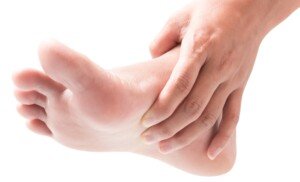
This site contains DOZENS of articles that answer questions about twitching muscles and benign fasciculations.
On this site you will find a WEALTH of information that addresses just about every conceivable question about twitching muscles, as well as perceived weakness, strength tests and the EMG test.
Below are links to some of these articles, but many more await you; just type into the search box (upper right of any page) what you’re seeking answers to, and see what comes up in the results!
Click on the body part that’s been twitching:
- Toes — whether it’s the pinky, big toe, several toes, etc.
- Stomach — lower, middle or upper abdomen or the entire stomach area.
- Thumb — sometimes the entire thumb moves, and this is hard to dismiss.
- Lip — it could be just the upper lip, or the lower or both, or the corner.
- All over — the twitching can be anywhere on the body and multiple areas going at the same time such as the back of the upper legs, the calves, the triceps, the eyelid, a finger … anywhere where there’s a muscle.
MORE Articles on Fasciculations Plus Other Related Concerns
It’s amazing how weak a person can feel when they start believing they have a fatal disease such as amyotrophic lateral sclerosis.
Suddenly, their leg or arm feels weak. There are ways for a medical professional to screen for true weakness (clinical) and that which only SEEMS real (perceived weakness).
ALS clinical weakness vs. perceived weakness
There are so many ways to test the strength of your foot to “rule out” foot drop
But some strength tests for the foot are very ineffective, while others are slam-dunk effective.
Sometimes a person with health anxiety will try to do the wrong kind of strength test.
If you know the right kind to do — ones that are very telling — you will gain more insight and quite possibly LOADS of reassurance.
Foot drop strength tests

Shutterstock/MRAORAOR
Some men and women will focus on their tongue and no other body part.
And sometimes the tongue is part of a fear that involves other body parts such as the hand or leg.
One of the aspects of twitching muscles that freaks people out is when they are visible.
If it can be seen, it can surely be felt. But if the twitch can be felt, it’s not always visible.
What does visibility actually mean when it comes to a twitching muscle? It’s all here: All about visible fascics
Anxiety is a leading cause of benign fasciculations (muscle twitching with a harmless cause). Whether the anxiety is acute or chronic, it can affect the body in many worrisome ways.
Exercise or vigorous physical activity, as well, can cause residual or lingering fasciculations.
For instance you may end up with a real “thumper” in your quad a few hours after going at it on your gym’s revolving staircase.
A combination of anxiety and exercise can create ripe conditions for lots of twitching.
Muscle twitching connection to anxiety, exercise

Depositphotos.com
And speaking of the quads — the quadriceps muscles — this area of the body is a common hotspot for fasciculations.
Often, they can be felt while a person is sitting at their computer or watching TV.
Strength tests for this particular muscle group are almost endless, but there are several key movements that are excellent for testing strength and neuromuscular control. Here are strength tests for the quads.


























